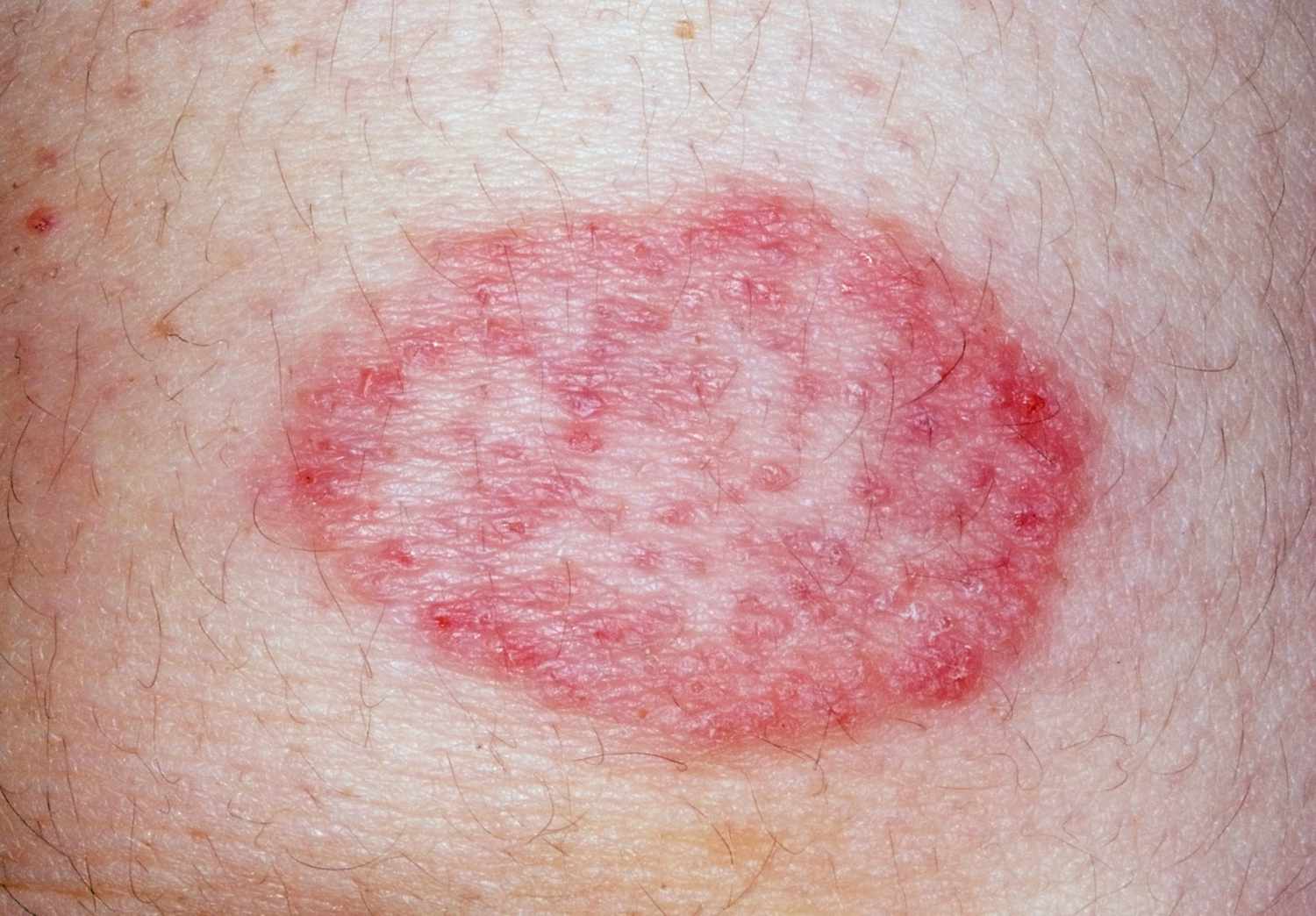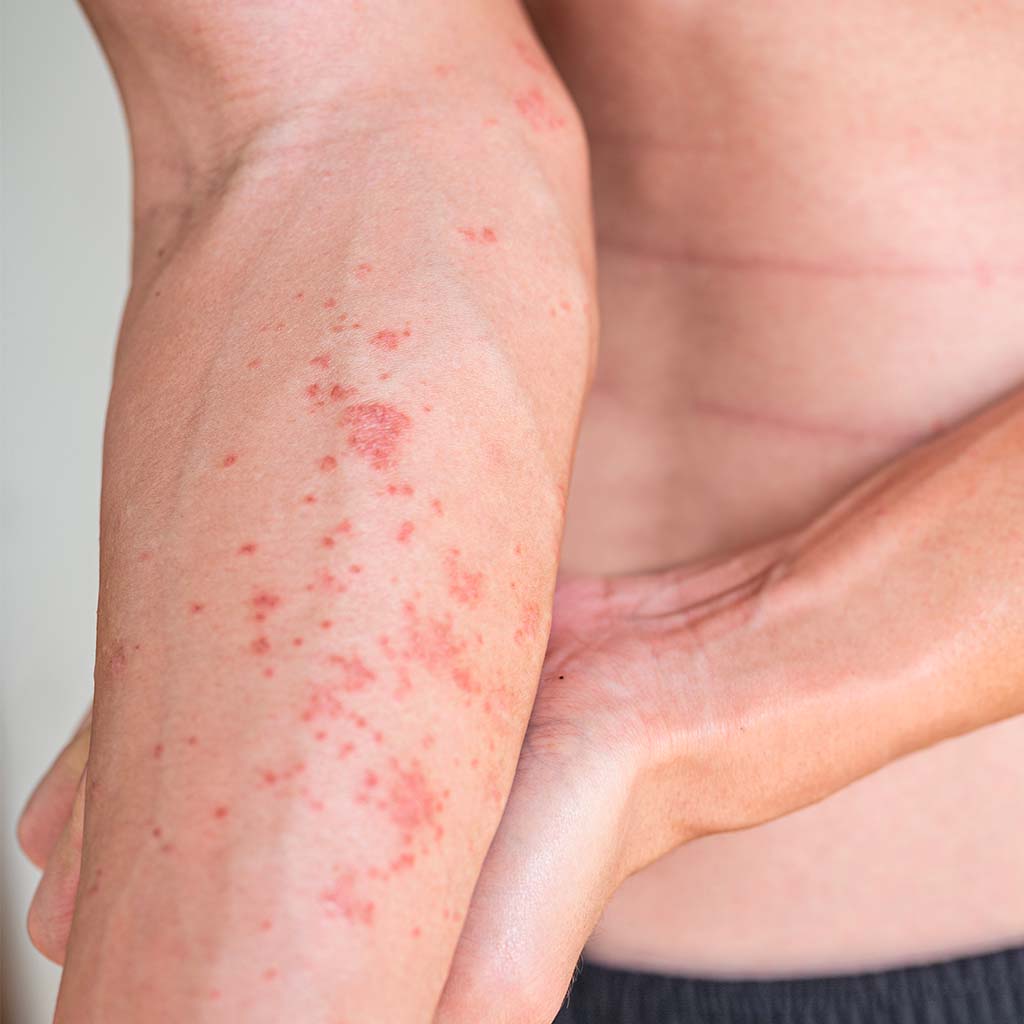Skin Conditions
VA Disability Ratings for Skin Conditions
If you served in the military and you now have a skin condition, you may be entitled to disability compensation. In fact, depending on where you served, the VA may assume your service is connected to the condition. This post explains the VA rating for skin conditions.
You went through hormonal bouts of acne like most teens, but that was decades ago. Now, your acne looks even worse than it did then, and you have no explanation for it. This extreme acne may be a result of toxic exposure during your military service. Chloracne is just one common skin condition in veterans that may potentially make you eligible for VA disability benefits.


Common skin conditions in veterans
Veterans can develop various skin conditions related to their service. The percentage of veterans with skin conditions depends on the type of condition. One study found that as many as 48% of Gulf War veterans have skin conditions.
Some of the most common types of skin conditions in veterans include:
- Dermatitis or eczema – a drying, swelling, and irritation of the skin
- Psoriasis – causes raised, scaly, itchy patches on the skin
- Skin cancer – the most common type of cancer, usually caused by too much exposure to the sun and UV rays
- Chloracne – extreme acne resulting from exposure to chemicals like Agent Orange
- Scars
- Burns
People experience skin conditions for a myriad of reasons. However, veterans may be more prone to skin conditions because of environmental hazards they’re exposed to during their military service.
VA rating for skin conditions
The VA rates skin conditions using diagnostic codes 7800-7833 in the Schedule of Ratings. Many of the rating amounts are based on how much of the skin is affected by the condition and where the condition presents itself. For example, the VA rates scars and burns based on location on the body, size, and severity of impact.
Many other skin conditions such as dermatitis, psoriasis, skin lupus, and fungal skin infections, among others, are rated using the General Rating Formula for the Skin.
The General Rating Formula for the Skin gives a rating of 60%, 30%, or 10% for at least one of the following listed conditions in each category below.
The VA defines systemic therapy as “treatment that is administered through any route (orally, injection, suppository, intranasally) other than the skin, and topical therapy is treatment that is administered through the skin.”
Description |
VA Rating |
Monthly Payment
|
|---|---|---|
Characteristic lesions involving more than 40 percent of the entire body or more than 40 percent of exposed areas affected; orConstant or near-constant systemic therapy including, but not limited to, corticosteroids, phototherapy, retinoids, biologics, photochemotherapy, psoralen with long-wave ultraviolet-A light (PUVA), or other immunosuppressive drugs required over the past 12-month period |
60% |
$1,395.93 |
Characteristic lesions involving 20 to 40 percent of the entire body or 20 to 40 percent of exposed areas affected; or Systemic therapy including, but not limited to, corticosteroids, phototherapy, retinoids, biologics, photochemotherapy, PUVA, or other immunosuppressive drugs required for a total duration of 6 weeks or more, but not constantly, over the past 12-month period |
30% |
$537.42 |
Characteristic lesions involving at least 5 percent, but less than 20 percent, of the entire body affected; orAt least 5 percent, but less than 20 percent, of exposed areas affected; or Intermittent systemic therapy including, but not limited to, corticosteroids, phototherapy, retinoids, biologics, photochemotherapy, PUVA, or other immunosuppressive drugs required for a total duration of less than 6 weeks over the past 12-month period |
10% |
$175.51 |
TDIU for skin conditions
In some cases, a veteran may be awarded total disability based on individual unemployability (TDIU) for skin conditions. Veterans are eligible for this benefit if they can’t maintain substantially gainful employment due to their service-connected condition(s).
A veteran with a skin condition may not be able to work if their condition causes a great deal of pain or limits movement. They also might not be able to maintain employment if they have skin cancer and the cancer itself or the associated treatment makes them too ill to attend a regular job.
Finally, some skin conditions may cause psychological concerns. Skin conditions are linked with depression and social isolation. For example, if a veteran has severe eczema that causes itching and a raised rash on their hands, face, and arms, it may cause them to avoid working with people or in public because of emotional discomfort.
Veterans who receive TDIU are compensated at the 100% disability rating level even though their condition is rated below 100%.
Veterans will typically be eligible for TDIU if they have:
1
At least one service-connected disability rated at 60% or more disabling OR
2
Two or more service-connected disabilities with at least one rated at 40% or more disabling and a combined rating of 70% or more
How our VA-accredited attorneys can help
If you have a service-connected condition that affects your ability to live and work comfortably, you deserve VA disability compensation. Contact VA Benefits today for a free consultation to see how we can help. You only pay us if we win.
